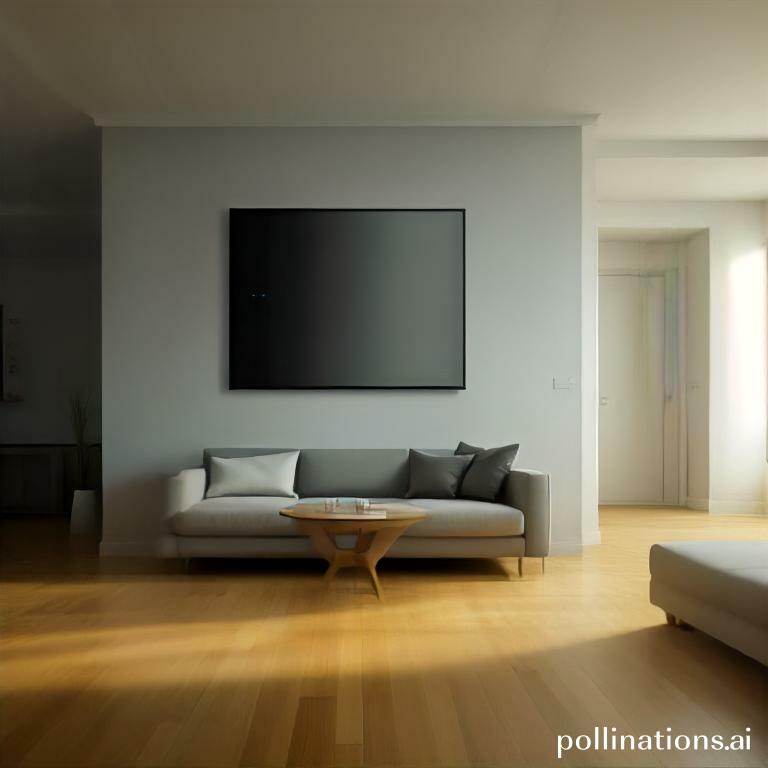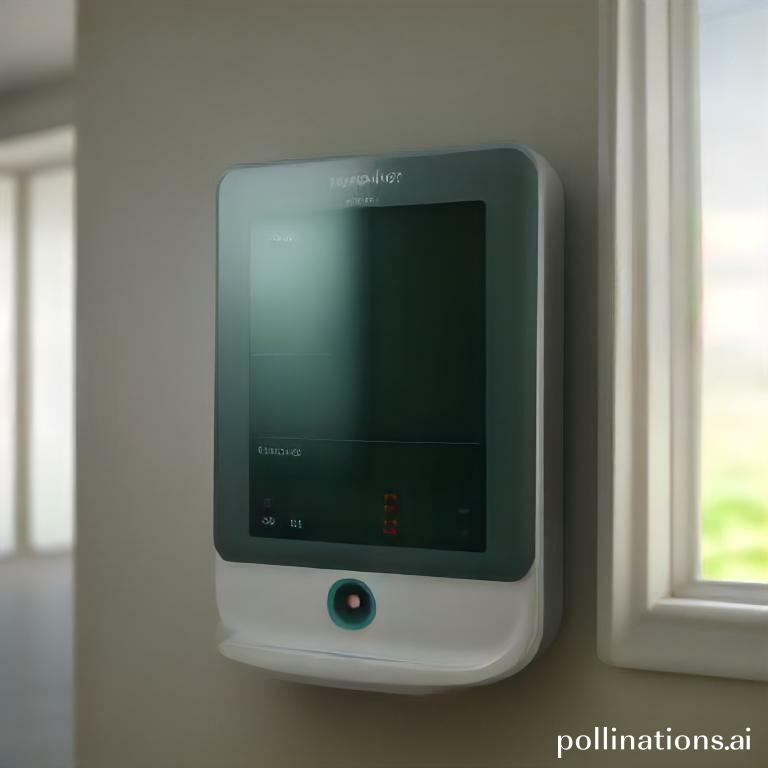
Check Out The Exclusive Deals Waiting For You! ∇
Mastering Humidity Levels
Ideal Humidity Levels for Comfort and Health
Maintaining the ideal humidity levels in your home is essential for your overall comfort and well-being. The recommended humidity range for indoor environments is typically between 30% and 50%. Within this range, you can experience optimal comfort, as higher humidity levels can make the air feel heavy and damp, whilst lower humidity levels can lead to dryness and discomfort.
When the humidity is within the ideal range, you can enjoy a pleasant atmosphere that promotes better sleep, prevents dry skin and respiratory irritation, and reduces the risk of mold and mildew growth. It’s important to note that different seasons and climates may require adjustments to maintain the ideal humidity levels.
How High Humidity Can Impact Your Home and Health
Excessively high humidity levels can have detrimental effects on both your home and your health. When humidity levels rise above 50%, it creates a breeding ground for mold, mildew, and dust mites. These allergens can trigger respiratory issues, allergies, and asthma attacks.
Additionally, high humidity can cause structural damage to your home. Excessive moisture in the air can lead to condensation on windows, walls, and ceilings, which can eventually result in peeling paint, warped wood, and even mold growth within the walls.
The Effects of Low Humidity on Your Health and Home
Though, low humidity levels can also have negative consequences. During the winter months or in dry climates, humidity levels can drop below the recommended range, leading to dry skin, irritated nasal passages, and respiratory discomfort.
Furthermore, low humidity can affect your home’s structure and furnishings. It can cause wood to shrink and crack, paint to peel, and static electricity to build up. These issues not only impact the aesthetics of your home but can also result in costly repairs.
| Humidity Level | Effects |
|---|---|
| High Humidity | Mold and mildew growth, respiratory issues, structural damage |
| Low Humidity | Dry skin, respiratory discomfort, damage to wood and furnishings |
The benefits of smart thermostats in humidity control
1. Accurate measurement of humidity levels
Smart thermostats are equipped with advanced sensors that can accurately measure the humidity levels in your home. This allows you to have a better assimilating of the moisture content in the air and take necessary actions to maintain a comfortable and healthy environment.
2. Automatic adjustment of humidity settings
One of the key features of smart thermostats is their ability to automatically adjust humidity settings based on the detected levels. This means that you don’t have to manually control the humidity settings or worry about making adjustments throughout the day. The smart thermostat takes care of it for you, ensuring optimal humidity levels at all times.
3. Energy-saving advantages
Smart thermostats offer energy-saving advantages as for humidity control. By accurately measuring and adjusting humidity levels, they help prevent excessive moisture in the air, which can lead to the growth of mold and mildew. This not only helps maintain a healthier indoor environment but also reduces the energy consumption required for dehumidification.
| Benefits of Smart Thermostats in Humidity Control |
|---|
| Accurate measurement of humidity levels |
| Automatic adjustment of humidity settings |
| Energy-saving advantages |
Features to Consider in Smart Thermostats for Humidity Control
Humidity control is an important aspect of maintaining a comfortable and healthy indoor environment. Smart thermostats with integrated humidity control features can help you achieve optimal humidity levels in your home. In this section, we will probe the key features to consider when choosing a smart thermostat for humidity control.
1. Integration with Humidity Sensors for Accurate Readings
One of the essential features to look for in a smart thermostat is its ability to integrate with humidity sensors. These sensors provide accurate readings of the humidity levels in your home, allowing the thermostat to make precise adjustments to maintain the desired humidity level. This ensures that you can enjoy a comfortable living space without excessive dryness or dampness.
2. Customizable Humidity Settings for Personalized Comfort
Everyone has different preferences in regard to humidity levels. A good smart thermostat should offer customizable humidity settings, allowing you to set the desired humidity level based on your personal comfort. Whether you prefer a slightly higher humidity for a cozy feel or a lower humidity for a crisp atmosphere, having the ability to customize the settings ensures that you can create the ideal environment for yourself and your family.
3. Remote Access and Control of Humidity Levels Through Mobile Apps
With the advancement of technology, smart thermostats now come with mobile apps that enable remote access and control. This means that you can adjust the humidity levels in your home even when you are away. Whether you want to increase the humidity before returning home from a vacation or lower it during you’re at work, the convenience of remote access ensures that you can always maintain the optimal humidity level for your comfort.

Tips for Optimizing Humidity Control with Smart Thermostats
1. Proper Placement of Humidity Sensors for Accurate Readings
In regard to optimizing humidity control with smart thermostats, one of the key factors to consider is the proper placement of humidity sensors. These sensors are responsible for measuring the moisture levels in your home and providing accurate readings to the thermostat.
To ensure accurate readings, essential to place the humidity sensors in areas where humidity levels are likely to vary. This includes areas such as bathrooms, kitchens, and basements, where moisture levels tend to be higher. By placing the sensors in these areas, you can ensure that your smart thermostat is getting the most accurate data to adjust the humidity settings accordingly.
2. Adjusting Humidity Settings Based on Weather Conditions
Another important tip for optimizing humidity control with smart thermostats is to adjust the humidity settings based on the weather conditions. Different seasons and weather patterns can have a significant impact on the humidity levels in your home.
During the winter months, for example, the air tends to be drier, which can lead to lower humidity levels in your home. In these cases, you may want to increase the humidity settings on your smart thermostat to maintain a comfortable indoor environment.
Whilst, during the summer months, the air tends to be more humid, which can result in higher humidity levels in your home. In such cases, you may want to decrease the humidity settings on your smart thermostat to prevent excess moisture and potential issues like mold or mildew.
3. Regular Maintenance and Cleaning of Smart Thermostats for Optimal Performance
To ensure optimal performance and accurate humidity control, indispensable to regularly maintain and clean your smart thermostat. Over time, dust and debris can accumulate on the sensors and affect their accuracy.
Make it a habit to clean your smart thermostat regularly using a soft, dry cloth to remove any dust or dirt. Additionally, consider scheduling professional maintenance checks to ensure that all components are functioning properly and that the humidity control features are working as intended.
| Key Tips for Optimizing Humidity Control: |
|---|
| Proper placement of humidity sensors for accurate readings |
| Adjusting humidity settings based on weather conditions |
| Regular maintenance and cleaning of smart thermostats for optimal performance |

Common misconceptions about humidity control and smart thermostats
Humidity control is a crucial aspect of maintaining a comfortable indoor environment. In this section, we will address common misconceptions surrounding humidity control and smart thermostats, discrediting myths and providing accurate information.
1. Myth: Smart thermostats can completely eliminate humidity issues
Whilst smart thermostats offer advanced features and capabilities, vital to note that they cannot completely eliminate humidity issues on their own. Smart thermostats can help regulate humidity levels by adjusting temperature settings, but they may not be sufficient for addressing severe humidity problems. In such cases, additional measures like dehumidifiers or HVAC system modifications may be necessary.
2. Myth: Only high-end smart thermostats can effectively control humidity
Contrary to popular belief, you don’t need an expensive, high-end smart thermostat to effectively control humidity. Many affordable smart thermostats offer humidity control features that can efficiently manage and maintain optimal humidity levels. It is essential to research and choose a smart thermostat that suits your specific needs and budget.
3. Myth: Smart thermostats can’t accurately measure humidity levels
Smart thermostats are equipped with advanced sensors that can accurately measure humidity levels. These sensors utilize cutting-edge technology to provide precise readings, allowing the thermostat to make necessary adjustments for optimal comfort. Nonetheless, essential to regularly calibrate and maintain the sensors to ensure accurate humidity measurements.
Conclusion
Smart thermostats are an excellent tool for adjusting humidity levels in your home. By monitoring and controlling the temperature and humidity, you can create a comfortable and healthy living environment. With the ability to connect to your smartphone or other devices, you can easily adjust your thermostat from anywhere, making it a convenient and efficient option for homeowners. Remember to follow the manufacturer’s instructions and consult with a professional if you have any questions or concerns about installing or using a smart thermostat.
Overall, investing in a smart thermostat can help you save money on energy bills, reduce your carbon footprint, and improve your indoor air quality. Whether you’re looking to upgrade your existing thermostat or install a new one, there are plenty of options available to suit your needs and budget. So, why not take the first step towards a more comfortable and sustainable home today?
Read Also:
1. Smart thermostats for vacation settings
2. Troubleshooting smart thermostat connectivity



